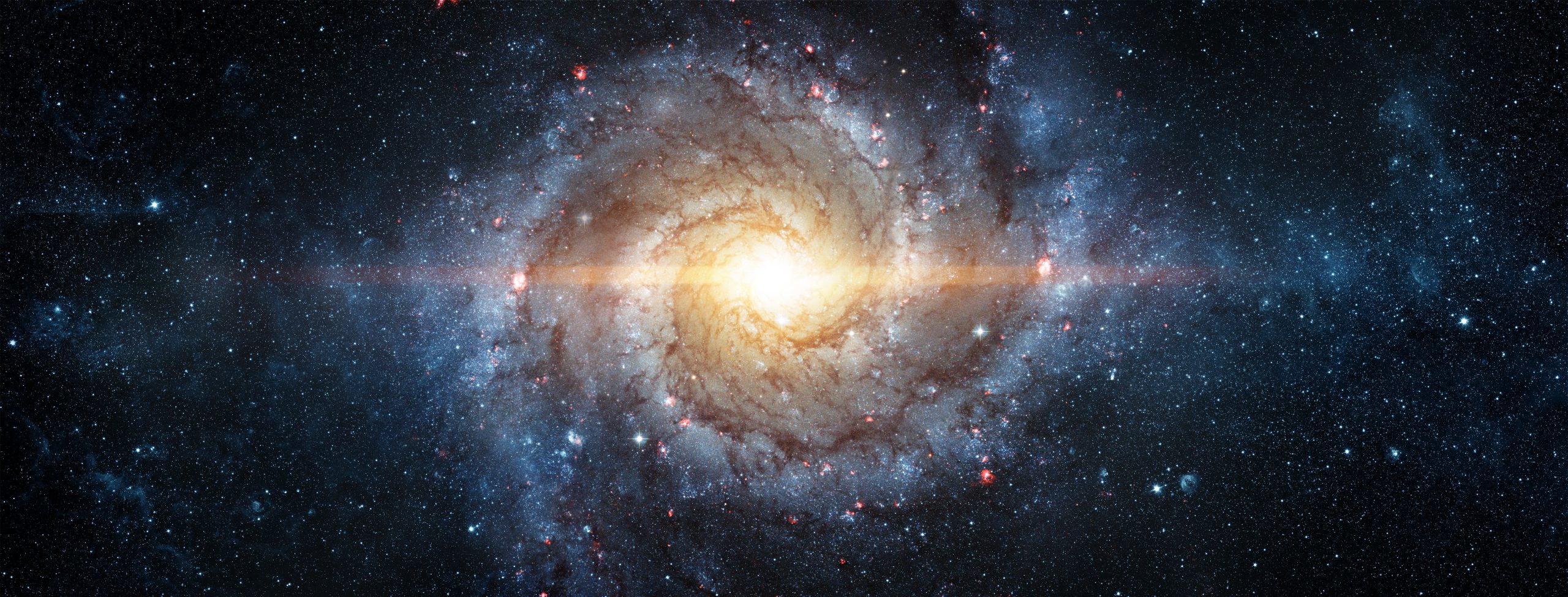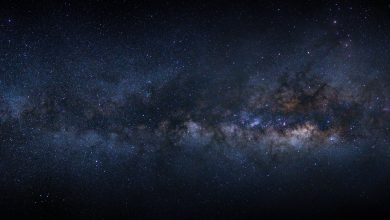Discover the Universe: Cool Space Facts You Need to Know

Space, the final frontier, has always captivated the human imagination and ignited our thirst for knowledge. From the twinkling stars we gaze upon each night to the profound mysteries lurking in the vast expanse of the cosmos, the universe holds endless wonders awaiting discovery. Our fascination with space spans centuries and continues to deepen as technology advances and reveals more of its secrets.
In this blog, our mission is simple: to share some of the coolest and most accessible space facts that will both inform and inspire you. Whether you’re a seasoned stargazer or someone who’s just starting to explore the night sky, we’ve got something for everyone. Prepare to embark on a journey through our solar system, witness phenomenal cosmic events, and delve into ground-breaking human explorations and discoveries.
So, why not join us as we lift off to explore the captivating universe? Buckle up, because we are about to launch into a world of incredible space facts that will leave you in awe and wonder.
Amazing Astronomical Objects
Planets and Moons
When it comes to our solar system, each planet holds an array of fascinating characteristics and stories. Did you know that Jupiter is so massive that it could fit all the other planets within it, or that Mars hosts the tallest volcano, Olympus Mons, towering 13.6 miles above its surface? But the marvel of our solar system doesn’t end with the planets; it extends to their intriguing moons as well.
Take Europa, one of Jupiter’s moons, which harbors a vast subsurface ocean beneath an icy crust, making it a potential hotspot for extraterrestrial life. Then there’s Titan, Saturn’s largest moon, featuring lakes and rivers of methane, painting a picture that is both bizarre and captivating.
Stars and Galaxies
Stars are the building blocks of galaxies, and understanding their types can be equally fascinating. A red giant, for instance, is an old star that has significantly expanded and cooled after exhausting the hydrogen in its core, while a white dwarf is what remains after a red giant sheds its outer layers, a dense and compact stellar core that slowly cools over time.
Shifting our gaze to the galaxies, the Milky Way stands out not just because it is our cosmic home, but also due to its breathtaking spiral structure, filled with billions of stars, planets, and other celestial wonders. Beyond our galactic confines lie other remarkable galaxies like Andromeda, which, traveling toward us at a speed of 110 kilometers per second, offers us a future galactic collision to ponder about.
Fun facts about planets in our solar system
When exploring the planets in our solar system, a treasure trove of fun facts emerges that both amazes and intrigues. For example, did you know that Mercury, the closest planet to the Sun, has temperature swings of over 1,000 degrees Fahrenheit between day and night? Venus, often called Earth’s “sister planet” due to its similar size and composition, rotates so slowly that a day on Venus is longer than its year! Earth, our home, is the only planet known to support life—thanks to its perfect position in the habitable zone.
Moving outward, the gas giant Jupiter has not only the most intense magnetic field but also the most moons, with a count of 79 and rising. Saturn is famous for its stunning ring system, composed of ice and rock, and it can float in water due to its low density. Uranus spins on its side, making its orbit uniquely tilted, while Neptune, the windiest planet, has storms that can reach speeds of over 1,200 miles per hour. Each planet’s unique traits contribute to the fascinating and diverse nature of our solar system, making it a rich subject for exploration and study.
Strange and Interesting Moons: Europa, Titan, etc.
As we venture deeper into our solar system, the moons orbiting its planets reveal a plethora of extraordinary and curious characteristics. Europa, one of Jupiter’s Galilean moons, is particularly intriguing due to its vast subsurface ocean beneath an icy crust. This hidden ocean raises the possibility of alien life, sparking curiosity and driving scientific exploration.
Then there’s Titan, the largest moon of Saturn, which boasts lakes and rivers of liquid methane, creating an eerie yet fascinating landscape. Titan’s thick atmosphere and surface conditions make it one of the most Earth-like bodies in the solar system, offering clues about the early stages of our planet.
Triton, Neptune’s largest moon, is another remarkable object with geysers that spew out nitrogen gas, presenting a dynamic and icy environment. Such moons not only challenge our understanding of planetary science but also expand our imagination about where life could potentially thrive beyond Earth.
Differences Between Types of Stars: Red Giants and White Dwarfs
Stars come in a variety of forms, each representing different stages in their life cycles. Red giants and white dwarfs are two such types that exemplify the dramatic changes stars undergo over time. A red giant is a late-phase star that has expanded and cooled after exhausting the hydrogen fuel in its core.
As the star’s core contracts under gravity, its outer layers swell and emit a reddish hue, which is why it’s called a red giant. In contrast, a white dwarf is the remnant of a star that has shed its outer layers after the red giant phase.
These small, dense stars are incredibly hot yet gradually cool over time. While red giants are massive and luminous, white dwarfs are small and faint, but both offer vital clues into the evolutionary processes of stars. Understanding these differences helps astronomers piece together the life stories of stars, enriching our comprehension of the universe.
The Milky Way and other breathtaking galaxies
As we continue our journey through the cosmos, our focus shifts to the Milky Way and other breathtaking galaxies, offering a glimpse into the grand architecture of the universe. The Milky Way, our home galaxy, is a sprawling spiral galaxy characterized by its stunning arms filled with billions of stars, gas clouds, and dark matter. Its structure provides a perfect environment for star formation and planetary systems. But the wonders do not end there; beyond the Milky Way lies a universe teeming with diverse galaxies, each with its unique characteristics.
For instance, the Andromeda Galaxy, our closest galactic neighbor, is a majestic spiral galaxy on a collision course with the Milky Way, set to merge in several billion years. Then we have elliptical galaxies, like M87, known for their immense size and the presence of supermassive black holes at their centers.
Irregular galaxies, such as the Magellanic Clouds, exhibit chaotic shapes and active star-forming regions, adding to the diverse tapestry of the universe. These galaxies, with their vast and varied features, not only captivate our imagination but also offer invaluable insights into the formation and evolution of cosmic structures.
Section 2: Phenomenal Cosmic Events
Phenomenal Cosmic Events: Eclipses and Aurora Borealis
One of the most captivating aspects of our universe is the array of phenomenal cosmic events that it offers. Eclipses, for instance, provide a dramatic celestial display where one astronomical body moves into the shadow of another. A solar eclipse occurs when the Moon passes between the Earth and the Sun, temporarily obscuring the Sun’s light. This event can transform day into night and unveil the Sun’s corona, offering a unique spectacle that captivates viewers worldwide.
Similarly, lunar eclipses happen when the Earth moves between the Sun and the Moon, causing Earth’s shadow to fall on the Moon, sometimes creating a stunning ‘blood moon’ effect due to the reddish color it takes on. Another mesmerizing phenomenon is the Aurora Borealis, or Northern Lights, a natural light display predominantly seen in high-latitude regions around the Arctic.
This ethereal light show is caused by charged particles from the Sun colliding with Earth’s magnetic field, resulting in shimmering curtains of green, purple, pink, and red lights dancing across the night sky. Both eclipses and the Aurora Borealis not only serve as awe-inspiring spectacles but also remind us of the dynamic and interconnected processes that define our universe.
What causes solar and lunar eclipses?
When we look at the mechanics behind these eclipses, it becomes clear how the precise alignments of celestial bodies create such awe-inspiring phenomena. A solar eclipse occurs during a new moon when the Moon’s orbit brings it directly between the Earth and the Sun. This alignment causes the Moon to cast a shadow onto Earth, partially or completely blocking out the Sun’s light for a short time, depending on the type of eclipse.
Conversely, a lunar eclipse happens when the Earth positions itself directly between the Sun and a full moon, casting a shadow on the Moon. Unlike a solar eclipse, which can only be seen from specific areas on Earth, a lunar eclipse is visible from anywhere on the night side of the planet. These events highlight the intricate dance of celestial bodies and offer stunning reminders of the larger cosmic choreography at play in our solar system.
The Magic of Northern and Southern Lights
The magic of the Northern and Southern Lights, scientifically known as the Aurora Borealis and Aurora Australis respectively, is a breathtaking phenomenon that enchants many skywatchers. These natural light displays occur in the polar regions and are primarily seen in high-latitude areas around the Arctic and Antarctic.
The mesmerizing dance of colorful lights across the night sky is caused by charged particles from the sun interacting with Earth’s magnetic field. When these particles collide with gases such as oxygen and nitrogen in the atmosphere, they emit vibrant colors, ranging from greens and pinks to purples and reds. This spectacular event not only captivates those fortunate enough to witness it but also serves as a tangible reminder of the dynamic and interconnected forces at work in our universe.
Observing the Northern and Southern Lights can be a spiritual experience, invoking a sense of wonder and a profound appreciation for the natural beauty that exists beyond our everyday experiences.
Meteor Showers
The universe continually delights us with an array of phenomenal cosmic events, one of the most enchanting being meteor showers. Meteor showers occur when Earth passes through the debris trail left by a comet. As these tiny particles enter Earth’s atmosphere, they burn up and create bright streaks across the sky, commonly known as “shooting stars.” These celestial displays are not only visually stunning but also accessible, as they do not require specialized equipment to enjoy.
Annual meteor showers, such as the Perseids in August and the Geminids in December, attract skygazers around the globe who gather to witness these heavenly fireworks. Watching a meteor shower can be a deeply moving experience, making us feel more connected to the cosmos and the intricate celestial mechanics that create such breathtaking sights.
How meteor showers occur
Meteor showers are a marvel to behold, providing one of the most accessible and enchanting cosmic events for stargazers. These spectacular displays occur when the Earth passes through a cloud of debris left behind by a comet. As our planet’s atmosphere collides with these tiny fragments, they ignite and produce bright, fleeting streaks of light across the sky, often referred to as “shooting stars.” Not requiring any specialized equipment to witness, meteor showers can be enjoyed by simply looking up on a clear night.
Prominent annual showers like the Perseids in August and the Geminids in December are prime examples, attracting enthusiasts worldwide who gather to experience the magic of these celestial firework shows. Watching a meteor shower can provide a profound sense of connection to the cosmos, serving as a reminder of the intricate and wondrous mechanisms at play in our universe.
Famous Meteor Showers
Meteor showers are some of the most famous and eagerly anticipated cosmic events, drawing the attention of skygazers from around the world. Among the most renowned are the Perseids and Geminids meteor showers.
The Perseids, peaking in mid-August, originate from the debris trail of the Swift-Tuttle comet. Known for their high frequency and bright meteors, the Perseids offer a spectacular show, often producing upwards of 60 meteors per hour at their peak.
On the other hand, the Geminids appear every December and are considered one of the most reliable meteor showers. Unlike most meteor showers that originate from comets, the Geminids stem from an asteroid named 3200 Phaethon, resulting in slow-moving meteors that create vivid, impressive streaks across the sky.
With their predictability and grandeur, both the Perseids and Geminids hold special places in the hearts of astronomy enthusiasts and casual star watchers alike, serving as reminders of the beauty and wonder that lies beyond our planet.
Section 3: Human Exploration and Discoveries
Human exploration of space has brought about numerous landmark discoveries and achievements, marking our progress in understanding the cosmos. Historical space missions such as the Apollo program, led by NASA, showcased the pinnacle of human ingenuity and courage, with Apollo 11’s Neil Armstrong becoming the first person to set foot on the Moon in 1969.
Equally momentous was the Soviet Union’s Vostok 1 mission in 1961, which saw Yuri Gagarin become the first human to journey into outer space and orbit the Earth, breaking new ground in space travel. Beyond these historical milestones, recent advances have continued to push the boundaries of space exploration.
The deployment of Mars rovers, such as Curiosity and Perseverance, has provided unprecedented insights into the Martian landscape and its potential for past life. Additionally, the International Space Station (ISS) serves as a collaborative scientific laboratory orbiting Earth, allowing astronauts to conduct experiments that benefit life both on our planet and beyond.
These collective efforts from astronauts, engineers, and scientists around the globe underscore the perpetual quest for knowledge and the dream of human presence extending further into the universe.
Section 4: Mind-Blowing Theories and Concepts
The universe is a vast, enigmatic expanse filled with phenomena that often stretch the boundaries of human understanding, and among the most mind-blowing concepts are black holes, wormholes, and the expanding universe.
Black holes are regions of space where gravity is so strong that nothing, not even light, can escape their pull. Inside a black hole, the laws of physics as we know them cease to apply, leading to a singularity where density becomes infinite and space-time curves infinitely.
Meanwhile, wormholes, though theoretical, are envisioned as tunnels in space-time that could potentially connect distant points in the universe, offering a shortcut for space travel. The concept of an expanding universe, born from the Big Bang Theory, suggests that our universe has been growing ever since its explosive inception around 13.8 billion years ago.
This expansion is still ongoing, with galaxies moving away from each other, making the universe ever larger. These fascinating ideas not only ignite curiosity but also inspire us to further explore and understand the intricate and mysterious workings of the cosmos.
Conclusion
Discover the Universe: Cool Space Facts You Need to Know
As we journey through the vast expanses of space, we’ve uncovered some of the most thrilling and awe-inspiring facts about our universe. From the dazzling displays of meteor showers like the Perseids and Geminids that paint the night sky with “shooting stars,” to the monumental achievements of human space exploration, such as the Apollo 11 Moon landing and the ongoing Mars rover missions, the cosmos never ceases to amaze.
We’ve also delved into some of the most mind-bending theories, including the mysteries of black holes, the potential of wormholes as cosmic shortcuts, and the ever-expanding universe that continues to stretch the limits of our understanding.
But our journey of discovery doesn’t have to end here. Space is an infinite source of wonder and inspiration, and there is always more to learn and explore. Whether you’re a seasoned astronomy enthusiast or just beginning your cosmic adventure, we encourage you to keep seeking knowledge and unveiling the mysteries of the universe.
We’d love to hear from you! Please share your favorite space facts or ask any questions you may have in the comments below. Let’s continue this fascinating exploration together, one amazing space fact at a time.




